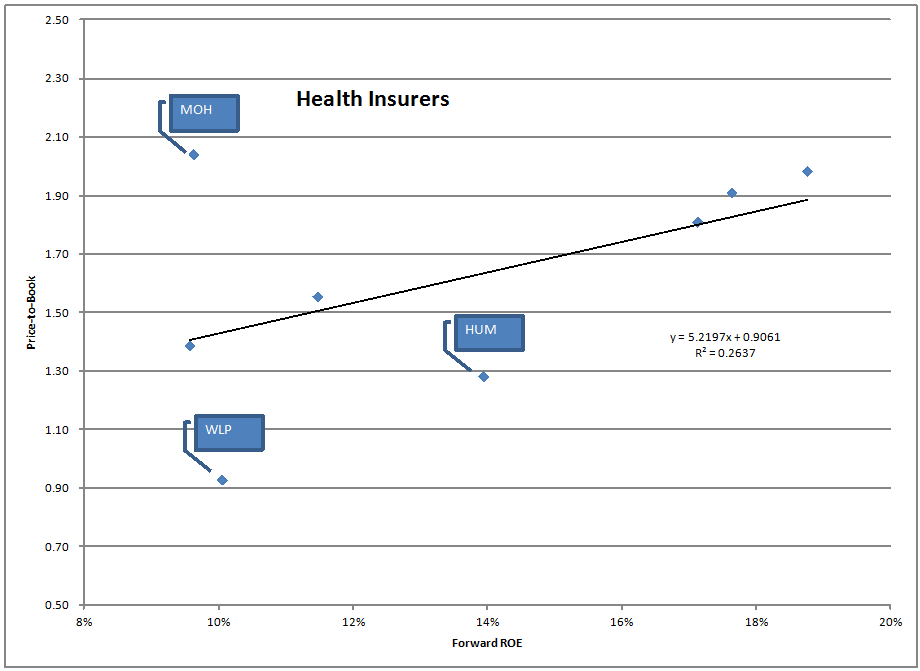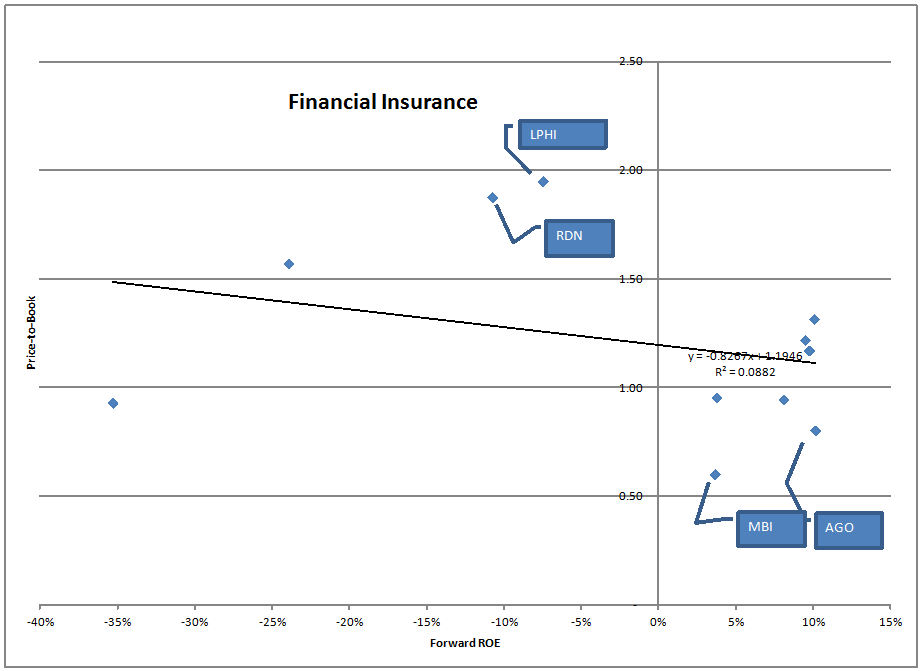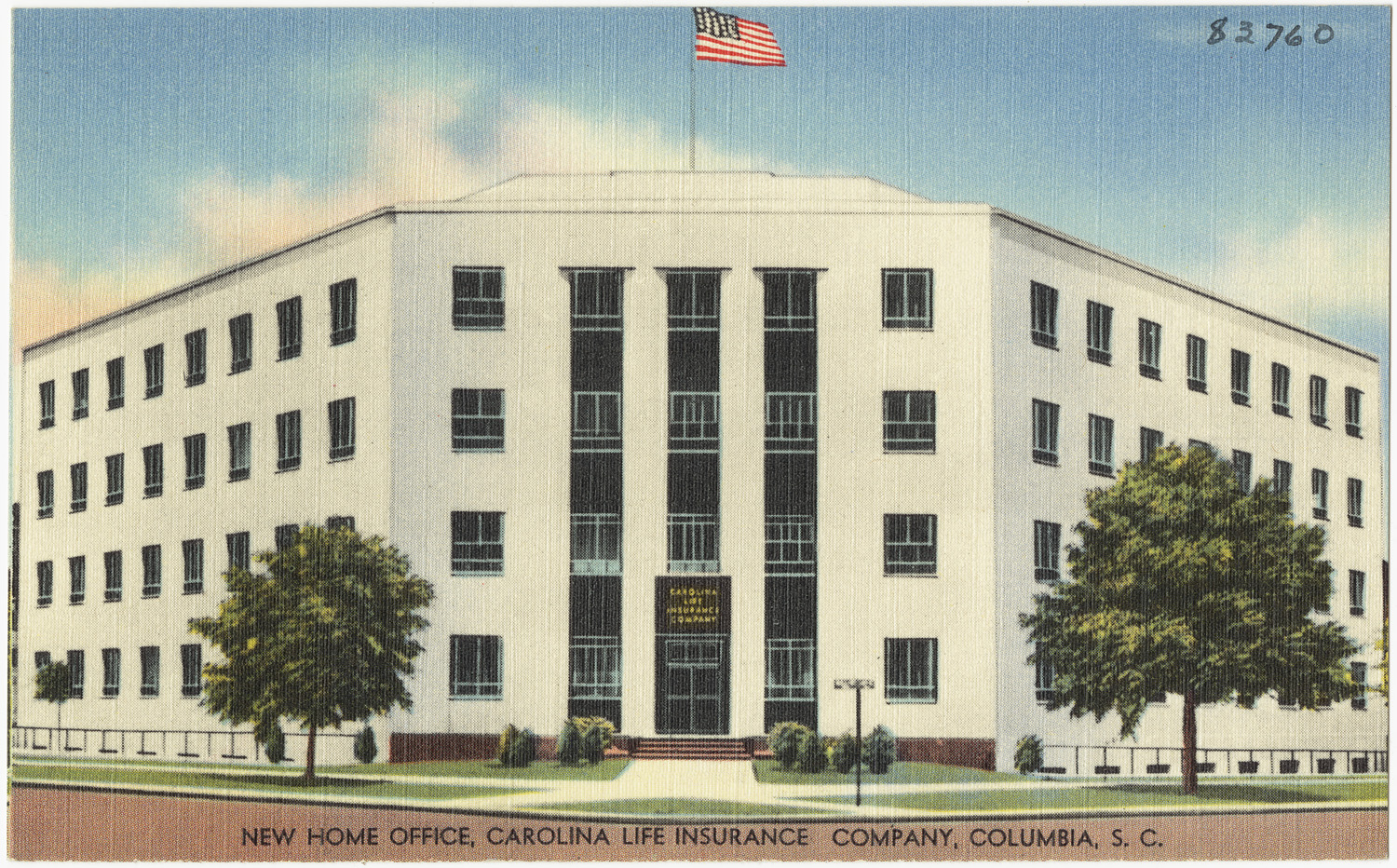On Insurance Investing, Part 7 [Final]
I wrote this piece once, and lost it, 1000 words.? Going to try again.
1) The first thing to realize is that diversification across insurance subindustries usually does not work.
Do not mix:
- Life & P&C
- Financial & Anything
- Health & Anything
Maybe you can mix P&C, Mortgage & Title, after all Old Republic survived.? The main point is this.? Insurance is not uniform.? Coverages are sold and underwritten differently.? Generally, higher valuations will be obtained on “pure play” companies? Diversification is swamped by management inability.? These are reasons for AIG and Allstate to spin off their life operations.
2) Middle-sized companies tend to do best from a valuation standpoint: the large have nowhere to grow, and the small are always questionable on their viability.? With a few exceptions, I like sticking with focused mid-cap companies with my insurance names.
3) Be aware of total subindustry capital relative to need.? After a big disaster, those that underwrote well will have capital to deploy into a stronger underwriting environment, where capital is scarce.? But don’t make too much of it because capital has become very fluid in insurance; the barriers to entry and exit are low.? Still, it is best to be an investor after a disaster, when everyone is running scared.? When total capital is high, and companies are fat, dumb, and happy, it is time to leave.
4) It’s good to look through the Statutory statements [regulatory statements filed with state insurance regulators] of their operating insurance subsidiaries to look for odd entries.? Occasionally, you will run into problems that do not have to be reported under GAAP accounting.? (Note: they should be reported under the spirit of GAAP, but not the letter of GAAP.? I have a saying, “It is okay to violate GAAP to be more honest, but not to be less honest.”)
Here’s an example: I ran across a life company that had to post an extra statutory reserve because they would lose money if interest rates rose.? That’s a significant admission, and the company was invested far more aggressively than almost all the other life companies we were tracking.? We shorted it, and got ripped as the credit markets surged 2003-2005.? We got out with a small gain when their earnings proved inadequate as interest rates rose, and credit losses rose.? But it took a long time.
At this point, I would be looking for special reserves established for secondary guarantees established for Term and Universal Life, and Variable Life & Annuity policies.? There is no specific requirement to hold those reserves on a GAAP basis, even though there may be general principles that would encourage additional reserves or disclosures.
5) There are ways of multiplying capital across subsidiaries — Subsidiary A reinsures liabilities of subsidiary B, while Subsidiary B reinsures liabilities of subsidiary A.? This is a way to create hidden leverage, so be aware of what is being done at the subsidiary level.? Doing these sorts of things is dumb, though legal.
Reviewing leverage is a good idea as well, where it is located, and what conditions it has.? The practice of insurance subsidiaries issuing surplus notes to parent companies has become all too common, which allows subsidiaries to write more business at the risk that when a subsidiary becomes impaired, the domiciliary state takes it over, and the parent company gets little to nothing.? (Payments on surplus notes can only be made with the approval of the insurance commissioner. In insolvency surplus notes typically receive nothing.)
The thing is, it is a lot harder to produce return on assets than return on equity. Though part 6 focused on ROE, in the short run, insurance companies can improve their ROE through substituting debt for equity.? The same applies to insurance companies that write GIC Medium Term Notes.? It’s just a cheap way of making a little extra income arbitraging your subsidiary’s high claims paying ability rating.? It fascinates me that regulators have allowed the insurance industry such latitude with deposit contracts that are called annuities, but have never once been annuitized.
Another hidden source of leverage are financial reinsurance agreements.? Down in the insurance subsidiaries, companies trade away a portion of future profits for surplus today.? These are usually bad deals to enter into, but because some insurance companies have a sales culture that requires continual growth, even if the sales that don’t justify the cost of capital required to back the policies.
6) Free cash flow is difficult to determine for financials, this applies to insurers as well.? Each regulator has rules on how much can be paid in dividends to their holding company.? Typically, subsidiaries can dividend away surplus so long as they are still strongly capitalized after the dividend.? (If it is large, they may have to petition their regulator for approval)? So if you want to approximate free cash flow for an insurer, try the following:? (Income or loss outside your insurance companies for the current period) + (Distributable Income from insurance companies for the current period).? The latter figure is statutory income +/- any decrease/(increase) in capital required to maintain the remaining business with adequate financial strength, calculated separately for each subsidiary.
7) Last note: on DAC/VOBA [deferred acquisition costs, value of business acquired; they? are similar, so I will just talk about DAC].? Once I had to convince a boss that though it is an intangible, like goodwill, it is not like goodwill in that it is more rigorously tested for recoverability.? If DAC gets written down (as opposed to amortized) that means that the future sum of profits on some of the insurance business is expected to be less than the acquisition costs deferred for the business.
Now, DAC can be done conservatively, by product and class year.? The more disaggregated it is, the more conservative, generally.? A few cells getting written down is no big thing.? But DAC can be as liberal as having one cell, which means if DAC is written down, the total value of future profits from existing business has been reduced — the company is worth a lot less.? The change in value is even more than the reduction in the DAC, because in the writedown process, the discount rate on the DAC went from a positive number to zero.? All other things equal, a DAC asset is worth more the higher its discount rate.
S0 pay attention: if DAC amortization is high relative to net income before tax, it means there isn’t that much margin for adverse deviation in the DAC.? Also, all other things equal, lower levels of DAC as a fraction of net worth are better.
Close with a story: before Mony Group was bought by AXA, it was doing DAC for the company as a whole.? A value investor, seeing the discount to book value, and sensing opportunity bought a lot of Mony.? Profitability was so bad, they had to write down DAC.? Book value declined & price to book value declined as well.? The value investor agitated for a sale, and AXA stepped in, buying it for moderate premium to where it was trading.? The group I was with went long for an arbitrage trade on a cash deal.
But the value investor thought the premium wasn’t high enough and agitated for more.? Because the takeout price was 70% of book, the idea seemed plausible.? But when you factored in the DAC earning 0% and a few other items, it looked generous enough to me.? So when the price got several percent above the deal terms we sold our stake and went short as much as we could find without having to pay much interest on the borrow.? Bit-by-bit the stock price moved down until a few days before the deal would close, when the price collapsed below the deal price, and we covered.? We even arbed a little more on the long side, but the trade was over.
And the point is this: it may look cheap, but test your assumptions on the values of assets and liabilities before committing a lot of capital to a any insurance stock.? GAAP, Tax and adjusted Statutory income validate book value, so a cheap stock with a low return on equity or assets is often not cheap.

![On Insurance Investing, Part 7 [Final]](https://alephblog.com/wp-content/themes/overlay/images/blog-img-3-2.png)







